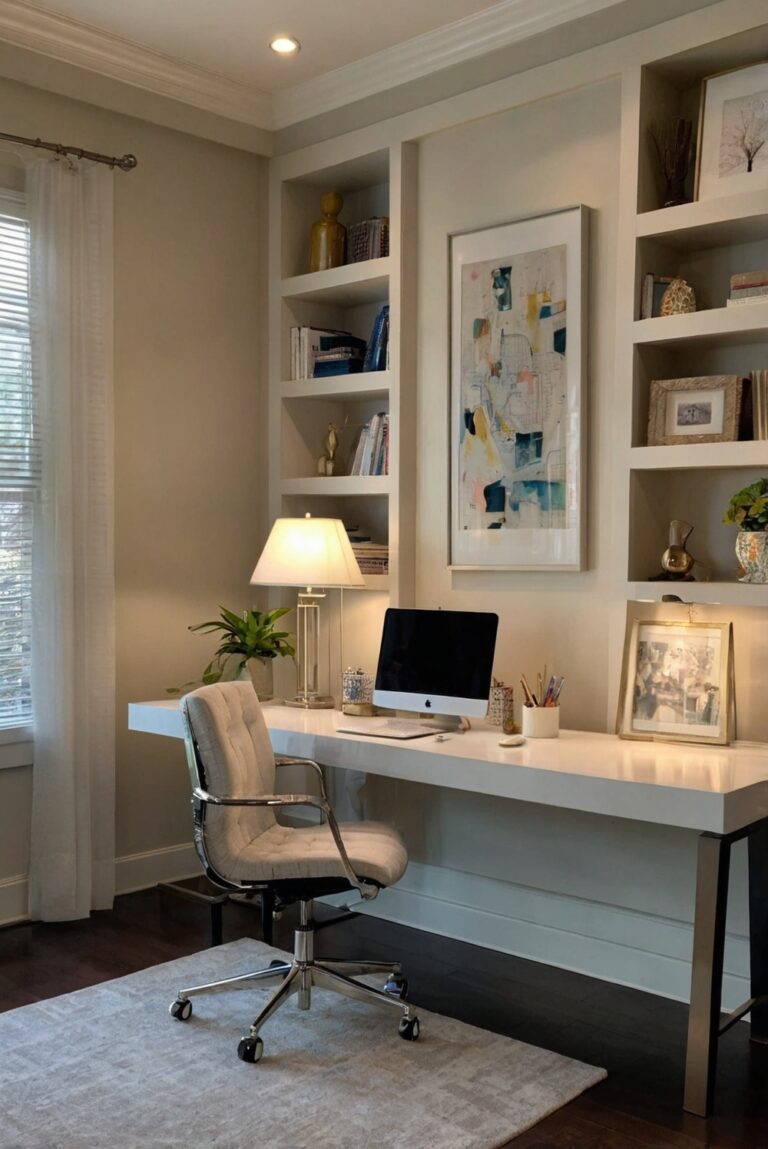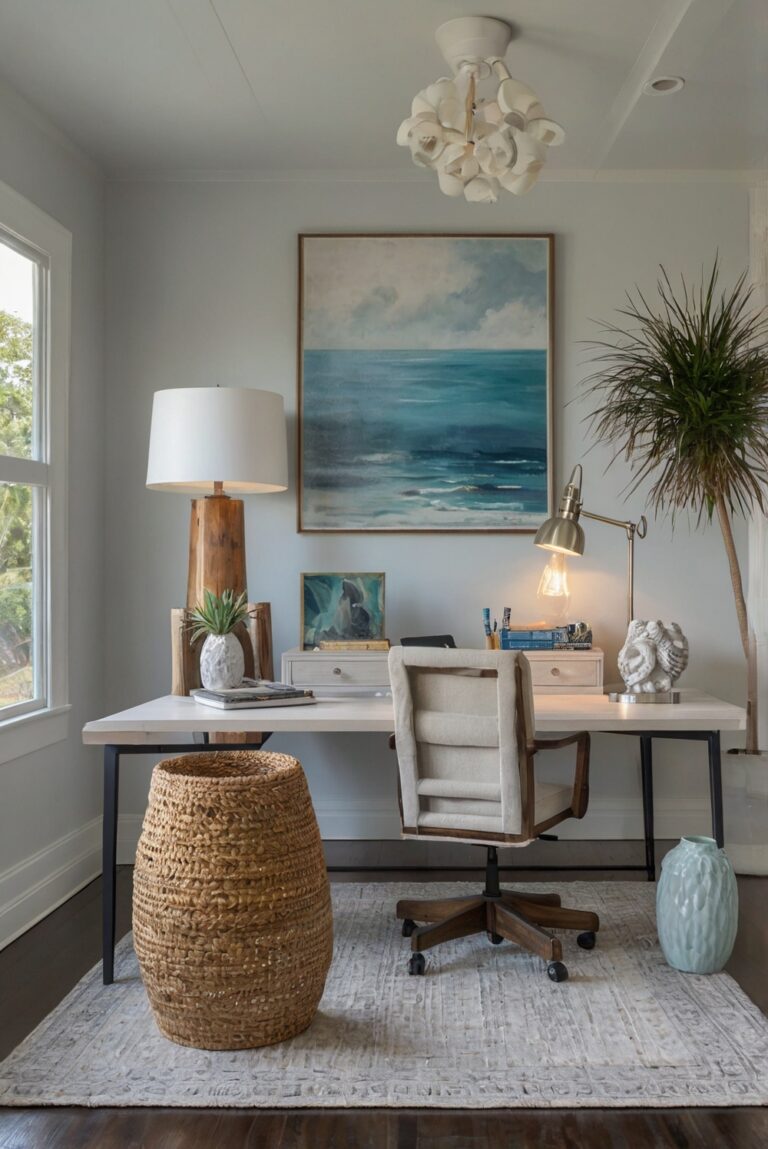How to set up a comfortable chair for extended periods of sitting?
Join us to discover tips on creating a cozy chair setup for long sitting sessions as an interior designer. Improve your comfort and productivity!
How to set up a comfortable chair for extended periods of sitting?
To create a comfortable chair setup for long sitting sessions at home, start by choosing a chair with proper lumbar support and adjustable height. Position the chair so your feet rest flat on the floor and your knees form a 90-degree angle. Add a cushion for extra comfort, and ensure your arms can comfortably rest on the desk or chair arms. Incorporate a footrest to reduce pressure on your lower back. Remember to take breaks and stretch periodically to avoid stiffness. Consider adding a neck pillow for additional support. By following these steps, you can create a cozy and ergonomic setup for prolonged sitting.
– Home decorating
– Home interior
– Home interior design
– Home decor interior design
– Space planning
– Interior design space planning
– Decorating interiors
– Interior bedroom design
– Designers kitchen
– Kitchen designs
– Living room interior
– Designer wall paint
– Primer paint for walls
– Color matching painting
– Paint color match
– Home paint colors
Adjusting the Chair Height:
– Importance: One of the key factors in setting up a comfortable chair for extended periods of sitting is adjusting the chair height to ensure proper alignment of your body.
– Information: Your feet should be flat on the floor, with your knees at a 90-degree angle.
– Points: This position helps distribute your weight evenly and reduces strain on your lower back.
– Hints: Use a footrest if your feet don’t reach the floor to maintain proper posture.
Setting the Backrest Angle:
– Importance: The backrest angle is crucial for supporting your lower back and reducing the risk of back pain during long periods of sitting.
– Information: Adjust the backrest to a position that allows your lower back to maintain its natural curve.
– Points: Proper lumbar support is essential for maintaining good posture and preventing discomfort.
– Hints: Consider using a lumbar pillow if your chair lacks adequate support.
Positioning the Armrests:
– Importance: Armrests can help reduce strain on your shoulders and neck by providing support for your arms.
– Information: Adjust the armrests so your arms are parallel to the ground and your shoulders are relaxed.
– Points: Proper arm support can prevent muscle tension and improve overall comfort.
– Hints: Avoid resting your elbows on the armrests constantly to promote circulation.
Adding Cushioning for Comfort:
– Importance: Cushioning can enhance the comfort of your chair and reduce pressure points on your body.
– Information: Consider adding a seat cushion or backrest cushion for extra support and padding.
– Points: Cushions can help alleviate discomfort and improve your sitting experience.
– Hints: Choose cushions made of breathable materials to prevent overheating.
Regularly Changing Positions:
– Importance: Changing positions frequently can prevent stiffness and promote circulation during long periods of sitting.
– Information: Shift your weight, stand up, or stretch every 30 minutes to avoid muscle fatigue.
– Points: Movement can help reduce the risk of developing musculoskeletal issues from prolonged sitting.
– Hints: Set a timer or use a reminder to prompt you to change positions regularly.
1. How can I set up a comfortable chair for extended periods of sitting?
To set up a comfortable chair for long periods of sitting, start by adjusting the chair height so that your feet are flat on the floor and your knees form a 90-degree angle. Ensure that your lower back is supported by using a lumbar pillow or adjusting the chair’s backrest. Position your chair close to your desk to avoid stretching or straining. Use a footrest if needed to support your legs. Consider investing in an ergonomic chair with adjustable armrests and seat depth for added comfort. Remember to take breaks and stretch regularly to reduce the risk of stiffness and discomfort.
2. What are some tips for setting up a chair for extended sitting?
Some tips for setting up a chair for extended sitting include ensuring that the chair has adequate lumbar support to maintain proper posture. Adjust the seat height so that your thighs are parallel to the ground and your feet are flat on the floor. Use a cushion or footrest to support your legs if the chair is too high. Make sure the chair has a comfortable cushion and breathable fabric to prevent discomfort. Additionally, consider using a chair with adjustable armrests to support your arms and shoulders.
3. Why is it important to set up a comfortable chair for extended sitting?
Setting up a comfortable chair for extended sitting is crucial for maintaining good posture and preventing musculoskeletal issues. Prolonged sitting in an uncomfortable chair can lead to muscle stiffness, back pain, and poor circulation. By ensuring that your chair is ergonomically designed and properly adjusted, you can reduce the risk of these issues and maintain comfort and productivity during long periods of sitting. A comfortable chair promotes proper spinal alignment, reduces pressure on the lower back, and supports the natural curvature of the spine, resulting in improved overall well-being.
4. What are the benefits of using an ergonomic chair for extended sitting?
Using an ergonomic chair for extended sitting offers numerous benefits, including improved posture, reduced risk of musculoskeletal disorders, and enhanced comfort. Ergonomic chairs are designed to support the natural curvature of the spine, promote proper alignment, and reduce pressure on the lower back. They often feature adjustable components such as lumbar support, seat height, armrests, and seat depth, allowing for personalized comfort and support. By using an ergonomic chair, you can minimize the strain on your body, increase productivity, and reduce the likelihood of developing pain or discomfort associated with prolonged sitting.
5. Are there specific features to look for in a chair for extended sitting?
When selecting a chair for extended sitting, it’s essential to look for specific features that promote comfort and support. Opt for a chair with adjustable lumbar support to maintain proper posture and reduce back strain. Choose a chair with adjustable seat height to ensure that your feet are flat on the floor and your knees are at a 90-degree angle. Consider chairs with breathable fabric to prevent sweating and discomfort. Additionally, look for chairs with adjustable armrests and seat depth to support your arms and accommodate different body types. Investing in a high-quality ergonomic chair with these features can significantly enhance your sitting experience and overall well-being.







